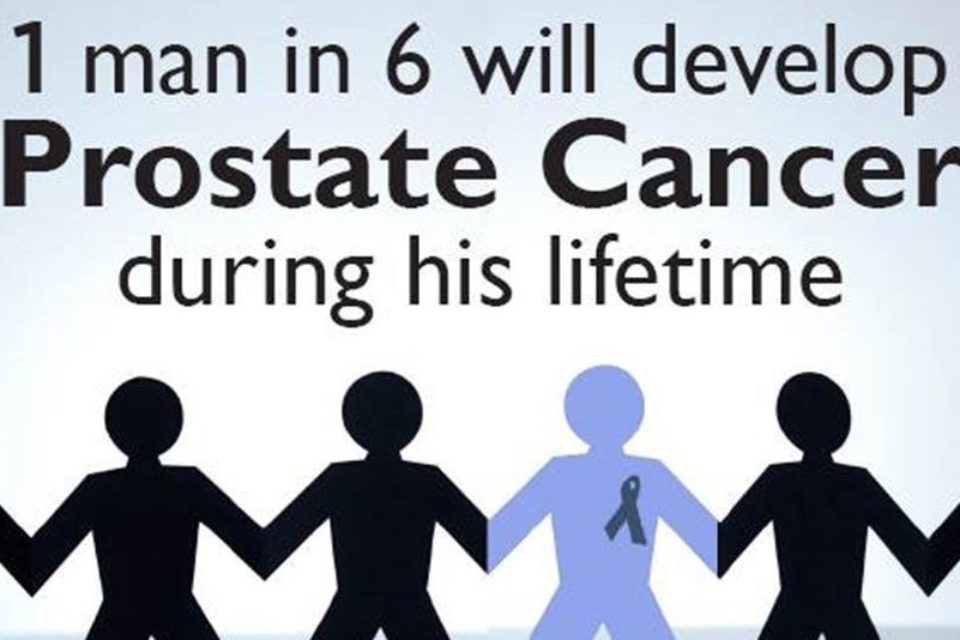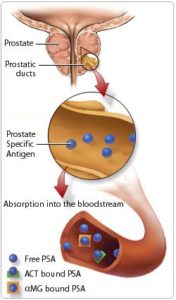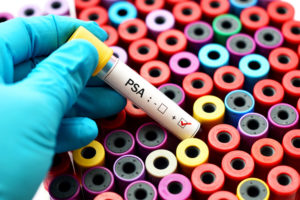What You Need to Know About Prostate Cancer

What You Need to Know About Prostate Cancer
Prostate cancer is the leading cause of cancer in men in the U.S., and its incidence is especially high in the Northeast. To learn more about the disease, how and when to screen for it, and how to reduce the risk of getting it, “What To Do” sat down with Warren Bromberg, MD, FACS, the Chief of the Division of Urology and Co-Director of the Institute for Robotic and Minimally Invasive Surgery at Northern Westchester Hospital. By Elena Serocki
What causes prostate cancer?
 Dr. Bromberg says the cause is not known. Risk factors include age, ethnicity, and whether one’s father or male siblings have the disease. There is also a genetic component. “Probably, like most cancers, this is caused by some genetic mutation,” says the doctor. “A combination of mutations can be inherited, or during your lifetime the genes within the prostate mutate, and something goes wrong.”
Dr. Bromberg says the cause is not known. Risk factors include age, ethnicity, and whether one’s father or male siblings have the disease. There is also a genetic component. “Probably, like most cancers, this is caused by some genetic mutation,” says the doctor. “A combination of mutations can be inherited, or during your lifetime the genes within the prostate mutate, and something goes wrong.”
African-Americans are at higher risk for prostate cancer and for aggressive prostate cancer. Asians are at lower risk—unless they move to the U.S. “If you live in rural China, your risk of prostate cancer is about 2%,” says the doctor. “If you move here, your risk is about 17%.” For that reason, Dr. Bromberg says, some believe that environmental, dietary, or behavioral factors may be involved.
How can men reduce their risk of prostate cancer?
“Nothing has been proven to totally prevent prostate cancer,” he says. But what is associated with higher risk, he adds, is “an excessive intake of calories: obesity.”

“For prevention, consuming less animal fat—less red meat—does make a difference,” Dr. Bromberg continues. This is a good rule to follow throughout life, but is helpful even if at age 50 you decide to start eating more healthfully. An excess of calcium may also contribute to the problem; generally 1,500 mg of calcium a day is recommended for men.
“Low vitamin D may also be a risk factor,” says Dr. Bromberg. The greatest risk of prostate cancer in the U.S. exists north of 40 degrees latitude. “The belief is that longer winters mean less sun and lower vitamin D levels,” says the doctor, “so prostate cancer goes up. We’re in that zone with higher incidence.”
 Foods that seem to play a positive role in prevention are fish, with their omega 3 fatty acids; cooked tomatoes, particularly when cooked in natural oils like olive oil; and cruciferous vegetables, such as broccoli and cauliflower. Quitting smoking definitely helps, as does limiting alcohol intake to one to two glasses of wine a day. “Whether soy products or green tea might be helpful isn’t clear,” he says, but it’s possible that these staples of the Asian diet might be helpful.
Foods that seem to play a positive role in prevention are fish, with their omega 3 fatty acids; cooked tomatoes, particularly when cooked in natural oils like olive oil; and cruciferous vegetables, such as broccoli and cauliflower. Quitting smoking definitely helps, as does limiting alcohol intake to one to two glasses of wine a day. “Whether soy products or green tea might be helpful isn’t clear,” he says, but it’s possible that these staples of the Asian diet might be helpful.
What are the signs of prostate cancer?
Most early prostate cancer has no symptoms. As men age, however, two things generally happen to their prostates. They often get a condition called BPH, or  benign prostatic hyperplasia, which is an enlarged prostate gland. The prostate encircles the urethra, which carries urine from the bladder out of the body. As the prostate gets bigger, it squeezes and tightens the urethra, causing urinary problems such as low flow, more urgency, and waking frequently to urinate. This condition is usually not serious and does not lead to prostate cancer.
benign prostatic hyperplasia, which is an enlarged prostate gland. The prostate encircles the urethra, which carries urine from the bladder out of the body. As the prostate gets bigger, it squeezes and tightens the urethra, causing urinary problems such as low flow, more urgency, and waking frequently to urinate. This condition is usually not serious and does not lead to prostate cancer.
Prostate cancer occurs generally on the outer portion of the prostate gland, well away from the urethra, so there’s no pain or symptoms. To screen for the disease, doctors do a digital rectal exam (DRE), feeling through the rectal wall for abnormalities in the prostate, such as firmness or a nodule. They also do a prostate-specific antigen (PSA) test, which measures the levels of PSA in the blood. PSA is a protein produced by the prostate, and elevated levels could be a sign of prostate cancer. Both tests are needed, says Dr. Bromberg, because “you can have a nodule and a normal PSA, or you can have a high PSA and a normal exam.”
What should patients know about the PSA test?
It’s an extremely useful and simple test, says the doctor. “But there’s controversy because other things can cause the PSA number to go up: infection, age, inflammation,” he adds. “It’s not a perfect test, and people have questioned its value. Statistically, if you do a PSA test on 1,000 men, about 100 to 120 of those will have an elevated PSA, but not all will have cancer. So if only 3% of men are going to die from this, why would we want to treat so many people?”
 The doctor notes that the U.S. Preventive Services Task Force recently downgraded the PSA test. “Since the PSA was introduced in the late 1980s/early 1990s, the death rate from prostate cancer has dropped 40%,” he says. “But since that test has been pooh-poohed, the incidence of metastatic prostate cancer is going back up.” So the PSA is again being revisited.
The doctor notes that the U.S. Preventive Services Task Force recently downgraded the PSA test. “Since the PSA was introduced in the late 1980s/early 1990s, the death rate from prostate cancer has dropped 40%,” he says. “But since that test has been pooh-poohed, the incidence of metastatic prostate cancer is going back up.” So the PSA is again being revisited.
“We have to do a good job in picking out who is best to treat,” says the doctor. “We want to catch it early, before it’s a problem. But if we catch it too soon—do we really have to know about it?” Ideally, he says, “shared decision-making” is needed between doctor and patient in determining whether or not to take the test.
At what age should men be tested for prostate cancer?
“This is the moving goalpost,” says Dr. Bromberg. “The recommendations are changing all the time.” In general, the focus has been on men ages 55 to 69. This age group is targeted because “if the tests are going to have an impact, this is the group for which they have the most impact.”
 However, if you have a family history of prostate cancer, certain genetic mutations such the BRCA gene, or are African-American, doctors recommend that you start getting screened at age 40.
However, if you have a family history of prostate cancer, certain genetic mutations such the BRCA gene, or are African-American, doctors recommend that you start getting screened at age 40.
How often should you be tested? The normal PSA level is generally considered to be 4 and under. “So if you have a PSA that is 1 or less, you could get a test every two or three years,” says Dr. Bromberg. “If it’s over 1, it should be done every year.”
The next edition of “What To Do” will feature Part 2 of our special section on prostate cancer, which will cover how rapidly it progresses, the latest treatments available, and other critical information you should know about the disease.
To learn more about prostate cancer treatment at Northern Westchester Hospital, visit www.nwhroboticsurgery.org. For more information about Dr. Bromberg, visit www.nwhroboticsurgery.org/DrBromberg.
More Articles from Northern Westchester Hospital
More Articles on Health & Fitness

















